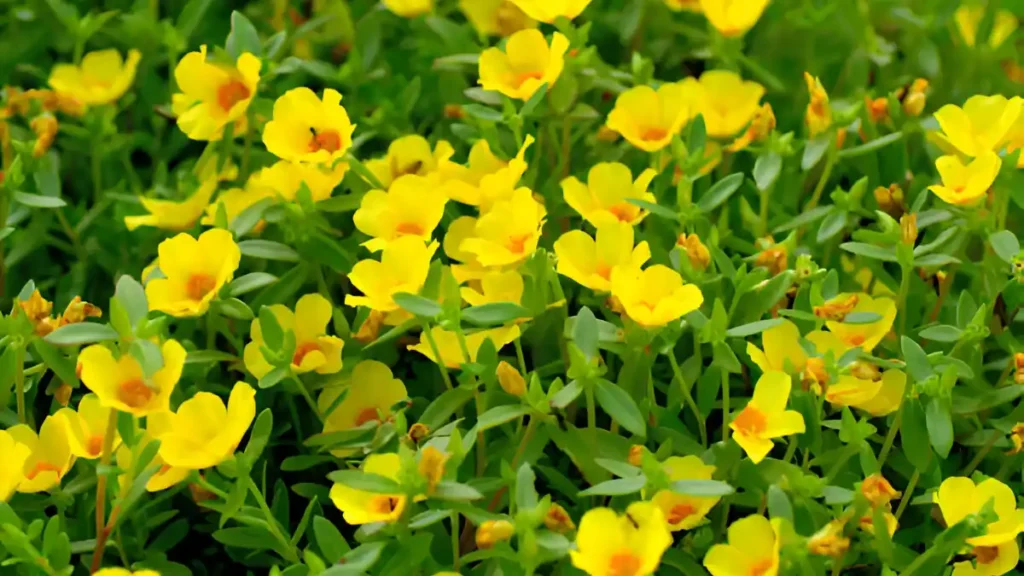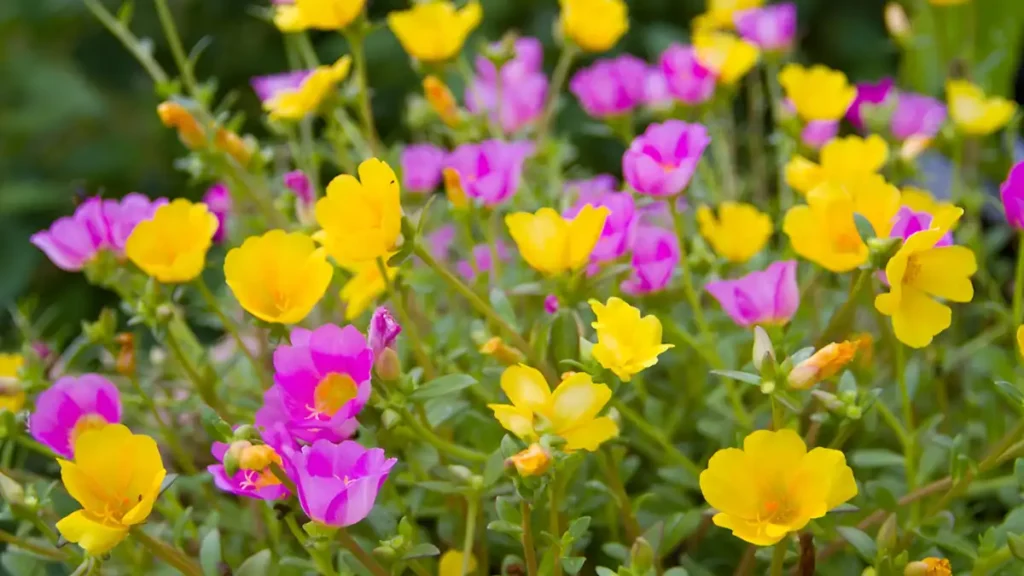A genus of flowering plants in the Portulacaceae family is called Portulaca, or Purslane. More than one hundred species are included, most of which are found in tropical and warm temperate parts of the world. This annual plant in the Portulacaceae family grows quickly and is frequently referred to as the sun rose or moss rose because of its saucer-shaped blooms. Usually slow-growing, portulaca plants have luscious, meaty leaves that aid in moisture retention. In this section, we will go over how to grow and care for Portulaca.
Learn about how to plant Portulaca:
Finding the Ideal Site
- Portulaca adores direct sunlight. Select a spot that gets six to eight hours of sunshine every single day.
Planting
- After all the chance of frost has passed, plant in late may.
- Plant them in the seed starting mix 1/8-inch deep. Maintain a temperature of between 70 and 75 degrees Fahrenheit and keep them moist.
- Dig a hole that is just the right width and depth for the root ball, then space the plants 6 to 12 inches apart. Be careful not to uproot the roots. Water plants moderately and tamp down the dirt slightly around their base.
- Lean, sandy, or rocky soil with a slightly acidic pH that drains quickly is preferred by portulacas. Well-drained, medium, or sandy soil is ideal for portulaca plants. Even yet, plants with well-amended soils have luxuriant foliage and copious blossoms.

Everything about portulaca plant care:
Watering:
- Although portulaca flowers are best in somewhat damp environments, they favor dry ones. Watering portulacas too frequently or heavily will lead them to have shallow roots. Too much irrigation can rot roots. To prevent excessive watering, one must pay close attention to the moisture content of the soil.
Process of fertilization:
- Portulaca does not require fertilizer. To promote new growth, apply a balanced slow-release fertilizer at the time of planting. Granular fertilizers should not be applied near plant crowns since they can burn plants. Use a water-soluble balanced fertilizer during the summer according to the manufacturer’s label’s safe application instructions.
Trimming:
- Portulaca plants require relatively little maintenance, including pruning. Trim back lanky growth to keep the look compact and well-groomed. If your plants get lanky, prune them back by up to half in mid to late summer to reenergize. To promote ongoing flowering, regularly remove spent flowers.
Propagation of portulaca:
- While seeds are the most frequent method of propagating portulaca plants, remove some little If all goes well, portulaca cuttings should grow into healthy plants in as little as two weeks.
Solution for Portulaca Pests and Diseases:
- Pest and disease issues are rare for portulaca plants, but it’s still a good idea to be on the lookout.
- Portulaca presents almost no problems when planted under the correct conditions. Root or crown rot, as well as powdery mildew, can be brought on by overwatering or high humidity.
- In certain cases, diseases have no cure, and affected plants need to be removed and destroyed. Keep them out of compost piles, as this can lead to a larger issue.
Conclusion:
In conclusion, common purslane is valued for its nutritional benefits, adding it to salads and other food preparations as a healthy garnish. Even though portulaca has numerous advantages, some species can become invasive in particular places. For this reason, it’s important to control their growth to avoid unintended spread. making, under adequate care, a useful addition to diets and gardens. You will be able to successfully generate the portulaca flower if you follow all of the previously specified steps.
Certainly! If you’d like to learn more, please consider following our WhatsApp Channel: Harvest Gardening
A frequently asked questions:
Q1. How to grow portulaca from seed indoors?
A1. Portulaca can be brought inside before the first frost in areas with lower temperatures. Give them a light mist and place them in a sunny window. Gather seeds from established plants in the autumn to replant the following year.
Q2. Will Portulaca be back every year?
A2. The species and your growth zone will determine if portulaca plants come back. During the next growing season, annual plants won’t come back. Many plants, however, will persist in thriving in areas free of cold.
Q3. Which portulaca variety is best for planting?
A3. Portulaca grandiflora (also known as moss rose) is a perfect type of Portulaca for planting since it has brilliant, long-lasting blooms and can grow in hot, dry circumstances.
Q4: What are some common types of Portulaca?
A4: A few common varieties of Portulaca are the moss rose (Portulaca grandiflora), purslane (Portulaca oleracea), and wingpod purslane (Portulaca umbraticola).
Q5: Are all types of Portulaca edible?
A5: Not every portulaca variety is edible. While Portulaca umbraticola and Portulaca grandiflora are mostly decorative and not usually eaten, Portulaca oleracea is frequently consumed.



